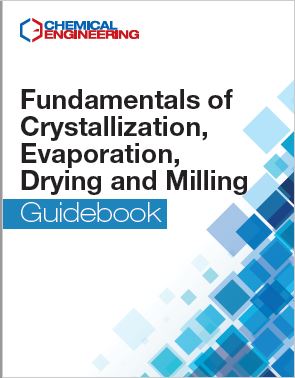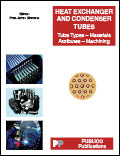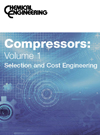Description
This Chemical Engineering Guidebook features a collection of tutorial-style engineering articles, to guide process engineers on the proper selection, design, operation and maintenance of systems that are used to carry our crystallization and many related unit operations.
Crystallization is widely used in chemical process industries (CPI) facilities for two main purposes — to produce a given product in crystalline form, and to separate and purify phases in a larger chemical process. It is one of the most challenging unit operations, and as such, many problems can arise during scaleup and operation.
This PDF guidebook includes engineering articles and factsheets related to crystallization, drying, milling, granulation and other forms or particle-size reduction, bulk-solids transport and more.
Several articles focus on state-of-the-art vacuum processing and vacuum drying, while others focus on nitrogen inerting and other ways to ensure safety during crystallization. These practical, how-to articles were originally published in Chemical Engineering magazine, between 2010 and 2018.
149 Pages. Delivered in a PDF format.
Articles Include:
Crystallization
Hansen Solubility Parameters (HSP)
Spray Drying Parameters
Challenges of Drying Sticky Wastewater Sludge
In wastewater-sludge drying and dewatering operations, many issues arise from the sticky properties of the sludge.
Particle-Size Reduction
Vacuum Drying: Basics and Application
Vacuum drying can be a useful tool for solid products that are heat-sensitive. Here are some guidelines for the selection and use of various types of vacuum dryers
Wastewater Sludge Centrifugation Before Drying
The decanter centrifuge is an important piece of equipment for sludge volume reduction prior to thermal drying. Understanding centrifuge operation helps manage drying energy costs
Increase Profits in Size-Reduction Plants
Material- and energy-balance models can help to identify potential opportunities
Characterize Bulk Solids to Ensure Smooth Flow
To minimize problems associated with handling all types of bulk solids, engineers must adopt a systematic approach to characterizing the flow and mechanical properties of the materials under a variety of operating conditions
The Benefits Of Two-Stage Drying
Circular fluidized-bed dryers can boost the capacity, energy efficiency and product quality when used in conjunction with other primary dryers
Advances in Pin Mill Technology
Improvements provide finer grinding at lower energy costs compared to air-swept classifying mills that have long reigned supreme in particle-size-reduction efforts
Batch Drying With Vacuum Contact Dryers
Drying is a demanding unit operation where solvents need to be removed without altering product chemistry. Vacuum dryers are essential pieces of equipment for accomplishing this task
Optimizing Analysis for Spray-Drying
Precise control over spray-drying processes can be enabled by modern measurement approaches that provide information on particle size and shape in realtime
Agglomeration and Granulation
Control Strategies Based On Realtime Particle Size Analysis
Practical experience illustrates how to achieve better process control
Adiabatic-Temperature Rise: An Awkward Calculation Made Simple
How to estimate a final temperature after a reaction
A Clearer View of Crystallizers
Improved understanding of crystallizer equipment and operation can aid purification efforts in the CPI
Biosludge Drying: System Design Schemes for the Sticky Phase
Drying biosludge from wastewater-treatment plants is complicated by the “sticky phase,” making the practice more of an art than a science. Discussed here are efforts to define the beginning and endpoints of this phase analytically
Guarding Against Fires and Explosions Caused by Self-Heating
The two experimental methods presented here can be used to quantify powder self-heating hazards in layer and bulk conditions in industrial processes
Prevent Combustible Dust Explosions with N2 Inerting
Targeted use of blanketing with inert gas offers an effective strategy for preventing combustible dust explosions in CPI facilities
A Primer on Spray Drying
An understanding of the basic information presented here will help you produce powdered products with desired characteristics, while operating the drying plant safely and with minimum energy
Selecting theProper Mill for Your Product
Understanding breakage behavior is crucial in mills
Heat Transfer in Wiped Film Evaporators
Simulations demonstrate the complex, changing properties of materials within the evaporator. Such information can help in both designing and selecting the proper evaporator
Confronting Crystallization Issues
Reliable information about industrial crystallization can be difficult to find and to apply to new situations. The work process outlined here will help engineers approach crystallization challenges
Industrial Crystallization for the CPI
This overview presents the traditional and emerging types of continuous crystallizers
Reduce Hazards in Process Vacuum Systems
Reduce explosion risks, and chemical and physical hazards, to ensure safer operation of vacuum pumps and related systems
MSMPR Crystallization Equipment
An Overview of Vacuum System Design
The design of vacuum systems deserves careful attention — there are multiple facets that affect efficiency, operability and cost
Vacuum Systems: Recommendations for Safe Operation
Follow this guidance to ensure that steam ejector systems, mechanical vacuum pumps and integrated vacuum systems are designed, operated and maintained to ensure process safety
Thin-Film Drying Offers Deep Benefits
This continuous drying technology is especially safe and flexible, and offers many benefits, including low operating costs, low space requirements and high specific-evaporation capacity




